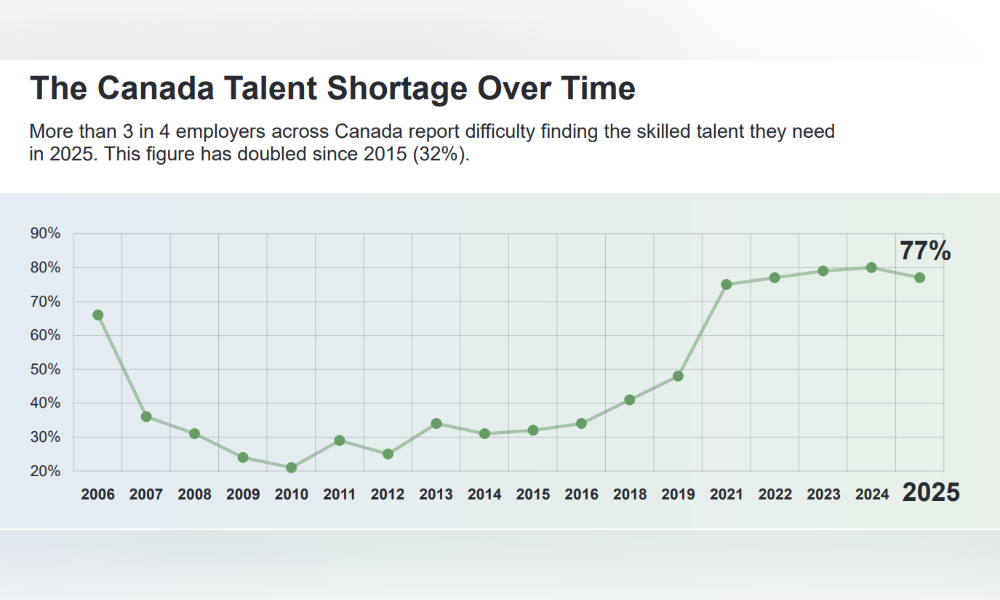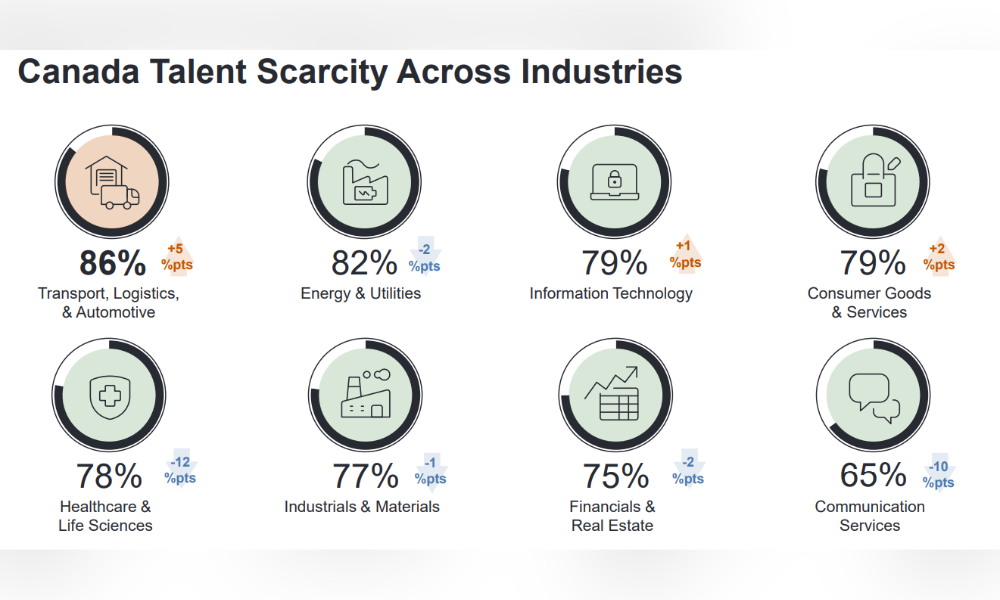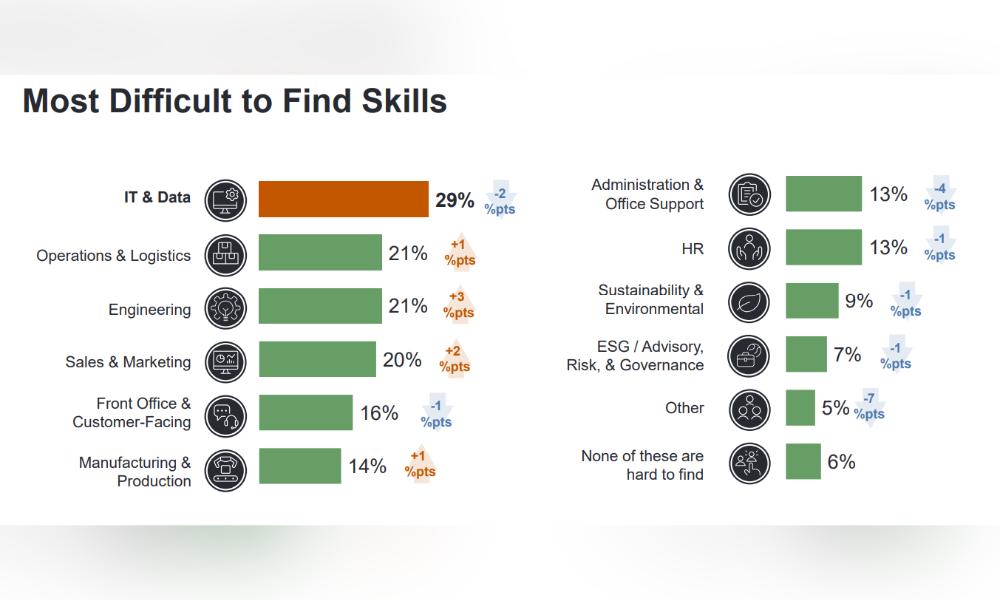
'The challenge of finding skilled talent persist,' says expert

Despite some improvement, a vast majority of Canadian employers continue to struggle with hiring skilled talent, according to a recent report from the ManpowerGroup.
Overall, 77% of Canadian companies report significant challenges in finding qualified workers — a slight improvement from 80% in 2024.
“While talent shortages have eased in Canada over the last year, the challenge of finding skilled talent persists,” says Darlene Minatel, country manager, ManpowerGroup Canada. “Organizations across Canada, not limited by region, industry or size, continue to report ongoing issues finding the talent that they need.”
The 2025 talent shortage rate in Canada (77%) is above the global average of 74%.

Labour shortage is widespread across Canadian industries, according to ManpowerGroup’s latest Talent Shortage Survey, which heard from more than 40,000 employers across 42 countries, including over 1,000 in Canada.

The number of employers facing difficulties in hiring workers is also high across different parts of Canada:
Northern Territories - 85%
Quebec - 80%
Ontario - 79%
Western Canada - 78%
Prairie - 72%
Atlantic Canada - 70%
From 2024 to 2034, there will be 1.12 million job openings in British Columbia, according to a report from WorkBC.
Also, employers from the smallest to the biggest face this same issue, according to ManpowerGroup:
Less than 10 employees - 71%
10-49 employees - 80%
50-249 employees - 78%
250-999 employees - 83%
1,000-4,999 employees - 78%
5,000+ employees - 71%
Meanwhile, countries experiencing the most severe labour shortages include:
Germany – 86%
Israel – 85%
Portugal – 84%
By contrast, labour shortages are less pronounced in:
Puerto Rico – 53%
Poland – 59%
Colombia – 59%
More than half of employers in six countries report that hiring has become more challenging over the past three years, according to a previous report from Indeed.
The skills that employers have found the hardest to find are the following:

To address this issue, many employers are taking the following steps:
Increasing wages (29%)
Upskilling & reskilling current employees (26%)
Targeting new talent pools (24%)
Offering more schedule flexibility (20%)
Offering more location flexibility (19%)
“While companies have taken more proactive steps to address these continued shortages, from offering higher wages to reskilling and upskilling current talent, it does seem as though the talent shortage is here to stay,” says Minatel.
Employers can address skills shortages by doing the following, according to the International Labor Organisation (ILO):
Raise awareness of the importance of equal career opportunities for men and women, address gender-based discrimination, and, where necessary, take action to make workplaces more gender responsive.
Introduce mechanisms that prevent workers from working unduly long working hours over long periods of time and implement measures to address and prevent stress-related health issues.
Provide support to platform workers to ensure decent working conditions.
Foster the active engagement of employers’ and workers’ organizations with regard to developing skills and curricula in vocational education and tTraining (VET) and in the higher education system, including through sectoral skills bodies.
Strengthen cooperation with education and training institutions in order to close skills gaps.
Continue to support lifelong learning and promote continuous training in the light of ongoing rapid technological change, for example by establishing job-related educational incentives within companies, giving greater attention to career path planning, and introducing on-the-job learning, inter alia, through job shadowing and job rotation.
Promote work-based learning as an integral component of VET programmes and courses at higher education institutions, and ensure high-quality workplace learning by strengthening cooperation among industry and education and training institutions.
Apple is looking to hire up to 20,000 workers over the next four years, according to a previous report.